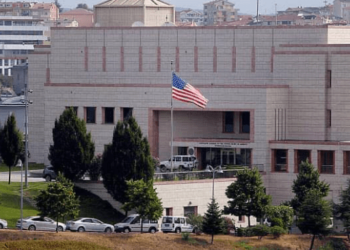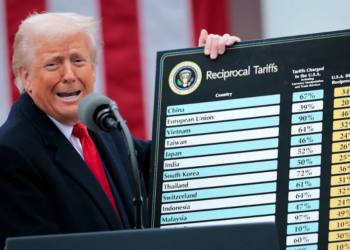Negotiators from the United States and China have reached a tentative agreement to loosen China’s restrictions on rare earth minerals, a critical component for industries such as defense, automotive manufacturing, and technology.
However, the agreement still requires approval from Presidents Donald Trump and Xi Jinping before it can be implemented.
Commerce Secretary Howard Lutnick confirmed the deal on Wednesday while speaking to reporters in London, explaining that the framework was established through May negotiations in Geneva, followed by a recent phone call between Trump and Jinping.
“President Trump’s got to approve it,” Lutnick stated. “The Chinese side has to take that back to their president. Once that’s done, we will be back on the phone together and will begin to start to implement this agreement.”
While the details of the agreement have not been fully disclosed, China is expected to ease restrictions on rare earth exports, providing essential minerals for American industries. In return, the U.S. could offer China relief from certain export controls on high-tech goods, addressing Beijing’s concerns over restrictions on semiconductor exports.
Trump Reacts to Agreement on Truth Social
President Trump responded positively to the tentative deal, posting on Truth Social that the United States would gain access to crucial minerals.
“Full magnets, and any necessary rare earths, will be supplied, up front, by China, likewise, we will provide to China what was agreed to, including Chinese students using our colleges and universities (which has always been good with me!),” Trump wrote in all caps.
Trump also hinted at broader trade negotiations, adding, “President XI and I are going to work closely together to open up China to American trade. This would be a great WIN for both countries!!!”
China Acknowledges Agreement Progress
China echoed U.S. optimism in a statement published by its commerce ministry, acknowledging that both sides had conducted “a candid and in-depth dialogue” over economic and trade concerns.
“The two sides exchanged views in depth on economic and trade issues of mutual concern, reached a principled consensus on the framework of measures to implement the important consensus reached by the two heads of state on June 5, and consolidated the results of the Geneva economic and trade talks,” the Chinese commerce ministry said on its website.
While the agreement signals progress, U.S. officials remain cautious, noting that the deal is contingent on Trump’s approval and additional follow-up negotiations.
What you should know
The tentative deal follows two days of negotiations in London, aimed at maintaining a fragile trade truce between the two economic powerhouses.
- Tensions between Washington and Beijing escalated following Trump’s “Liberation Day” tariff announcement in April, which introduced new tariffs on Chinese imports.
- A recent trade court ruling determined that Trump overstepped his authority in imposing sweeping levies on foreign goods, though an appeals court placed the ruling on hold pending further litigation.
- Unlike other countries that sought negotiations, China responded with heavy tariffs on U.S. goods, leading to a trade war that impacted industries on both sides. However, a de-escalation meeting in May resulted in reduced tariffs, with the U.S. imposing a 30% tariff on Chinese imports, while China set a 10% tariff on American goods.
Despite progress, Washington remains concerned over China’s control of rare earth minerals, which are essential for manufacturing fighter jets, automobiles, and critical equipment.
Meanwhile, Beijing has voiced frustration over U.S. semiconductor export restrictions, which have affected the operations of Chinese technology firms.
The agreement marks a step toward resolving longstanding trade disputes between the U.S. and China, but uncertainty remains. While rare earth access is vital for American industries, the impact of tariff reductions and export control adjustments will only become clear after further discussions.























